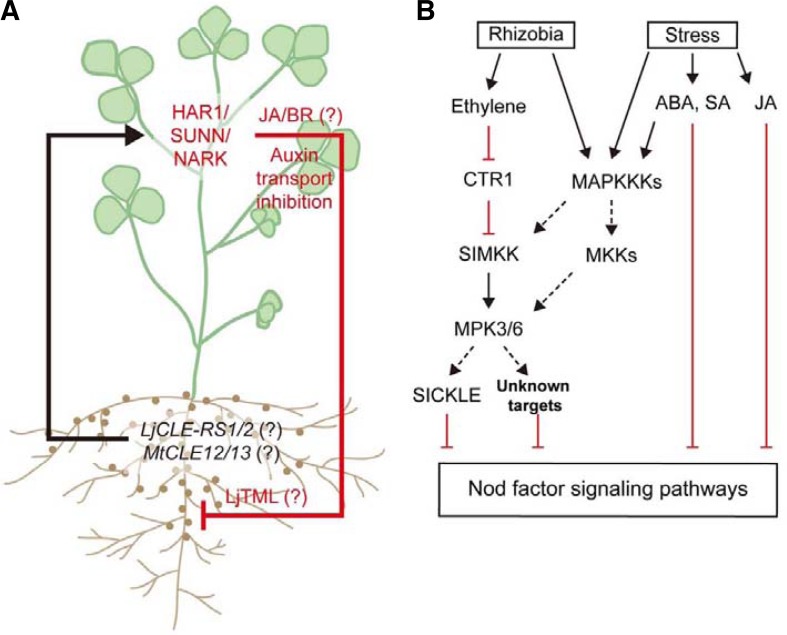Fig. 2.
Systemic and local inhibitory regulation of nodulation. (A) Schematic model of autoregulation of nodulation (AON). Long distance inhibitory pathways for AON have been proposed, but the root-derived signals are not clearly identified although some CLE peptides including LjCLE-RS1/2 or MtCLE12/13 might function as root-to-shoot signaling molecules. Root-derived signals might directly or indirectly activate the CLV1-like receptor kinase, HAR1/SUNN/NARK. These events create shoot-derived unidentified negative signals that suppress root nodule formation by inhibiting auxin transport and by presumed TML functions in the root. JA and BR are thought to be involved in shoot-derived negative signaling pathways. (B) Local inhibition pathways mediated by the coordination of stress-related hormone actions. Rhizobia and external stress signals activate MAPK signaling cascades and the action of plant hormones including ethylene, SA, ABA, and JA. Ethylene, a major negative regulator in nodulation, probably stimulates SIMKK(AtMKK4/5)-MPK3/6 cascades by suppressing CTR1 activity. The activated MPK3/6 proteins directly or indirectly regulate their downstream signaling components, including SICKLE/EIN2 and various stress-related transcription factors (unknown targets), to inhibit Nod factor signaling pathways. ABA, SA, and JA signaling pathways directly suppress Nod factor signaling, or their negative action could be integrated into SIMKK-mediated MAPK signaling cascades. The dashed arrows indicate unknown biochemical links.

